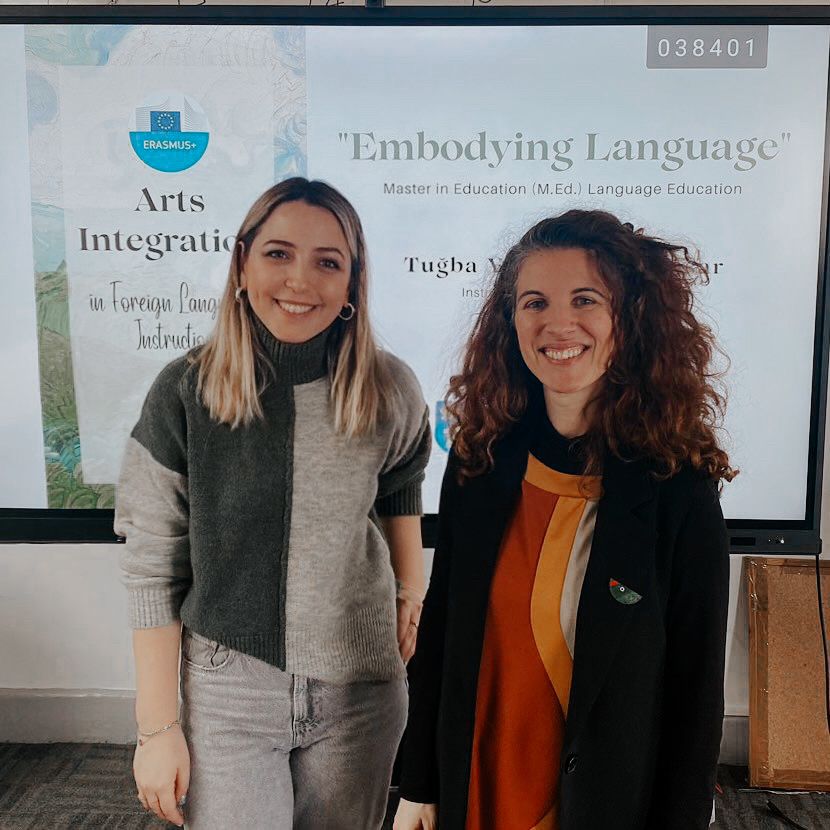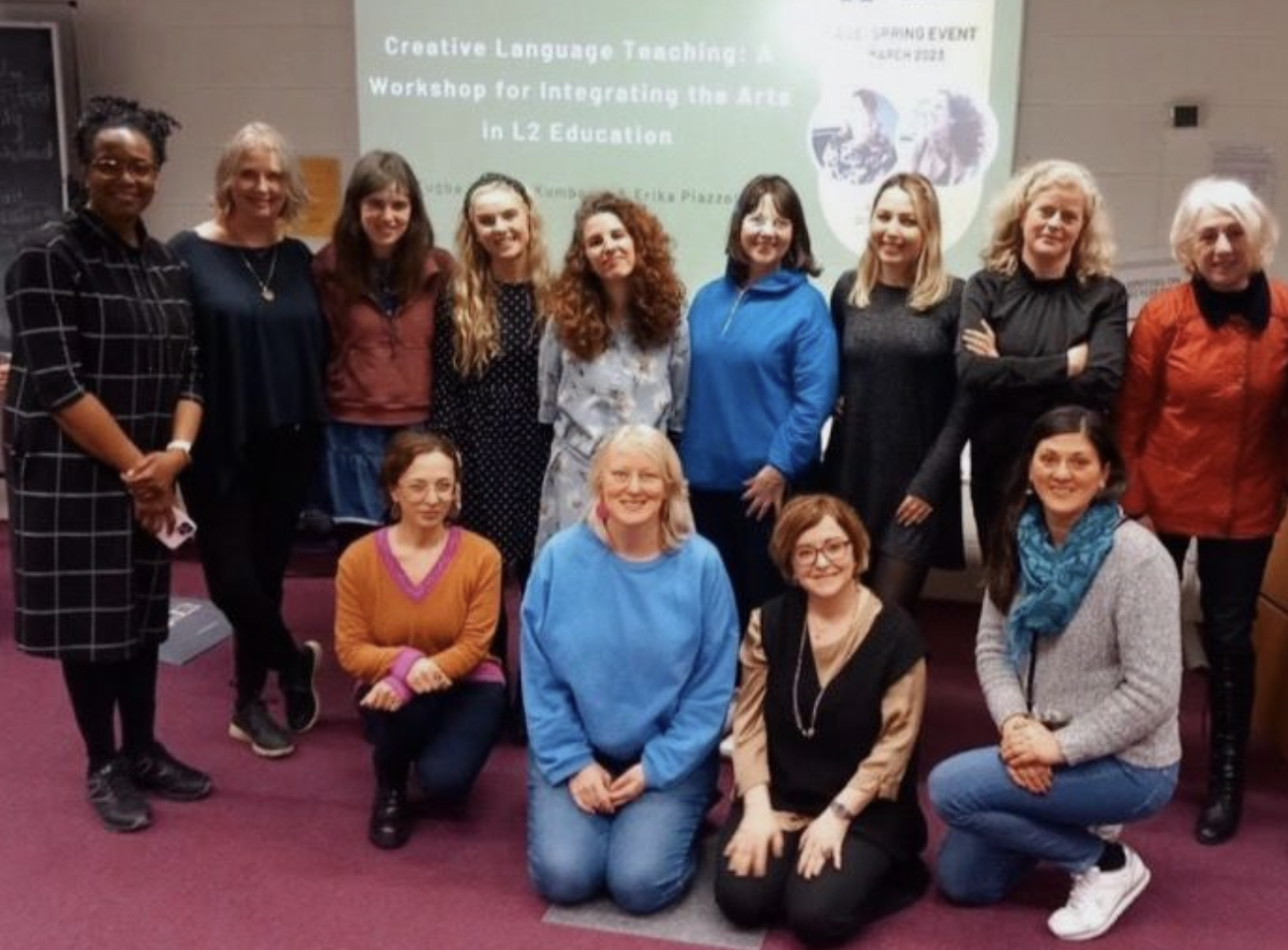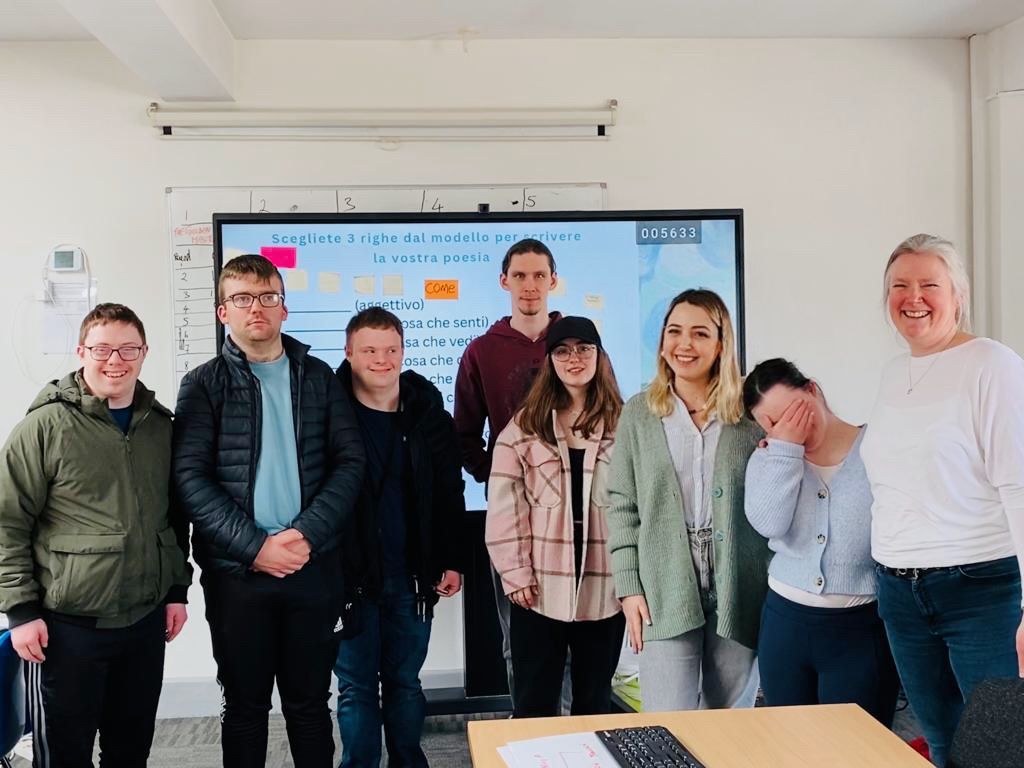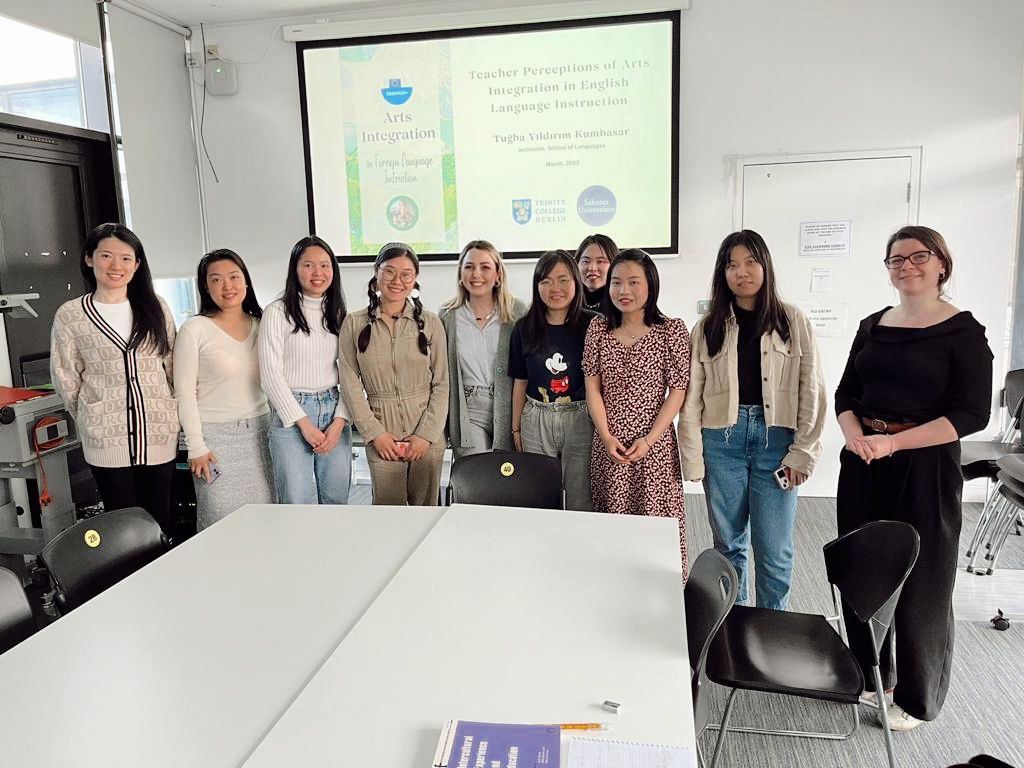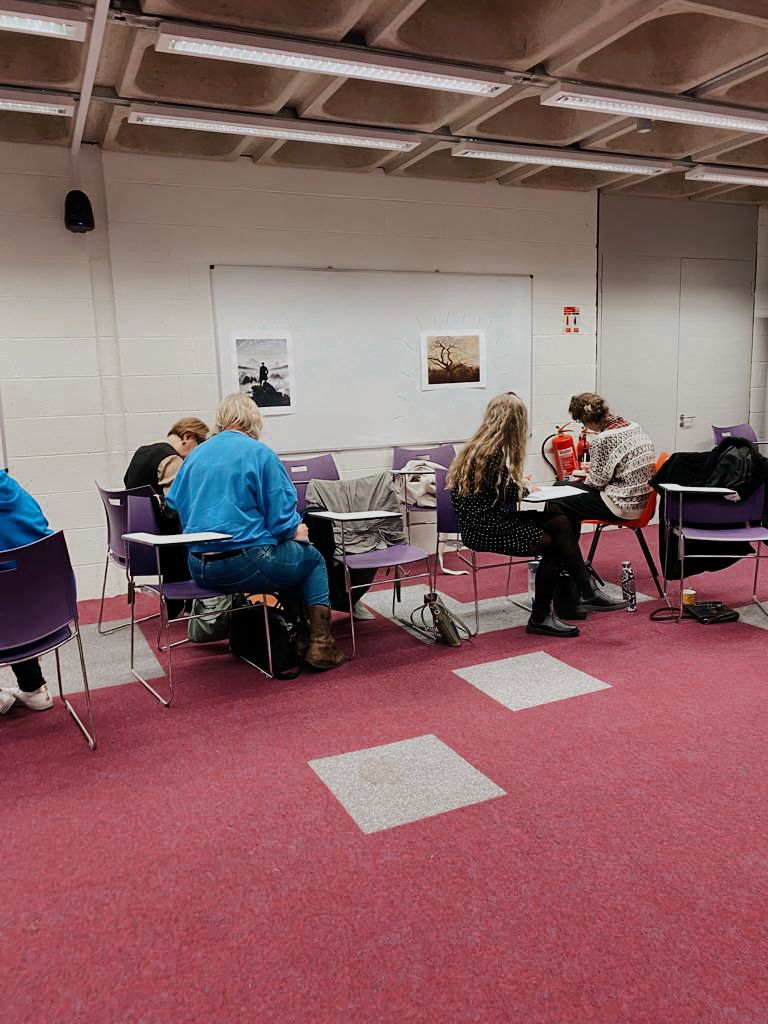Erasmus Staff Mobility For Teaching Experience at Trinity College Dublin
By Tuğba Yıldırım Kumbasar
I'm excited to share with you my recent Erasmus staff mobility for teaching experience at Trinity College Dublin (TCD), which took place from March 27-31. My primary objective for this mobility was to collaborate closely with Erika Piazzoli, an Assistant Professor in Arts Education at TCD, share my knowledge of arts integration in foreign language instruction with language teachers, and engage in critical dialogue with teachers who already employ, or are interested in adopting, an arts-based creative pedagogy in their teaching practices. I could accomplish these aims through several sessions I delivered to various groups at Trinity College Dublin.
One of the highlights of my experience was planning and delivering a 2-hour lecture for Master’s students enrolled in Embodying Language, a compulsory module for the Master in Language Education at TCD. The lecture provided an overview of the theoretical foundations and practical elements of arts integration in foreign language instruction. During the lecture, students had the opportunity to engage in arts-based practices and reflect on their personal experiences. The article titled “Mistakes can be beautiful”: Creative engagement in arts integration for early adolescent learners” served as a starting point for our discussion on their experiences with artful learning. Witnessing how differently arts touched each student was truly inspiring.
I also had the privilege of presenting my research on "Teachers' Perceptions of Arts Integration in Language Instruction" to faculty at the School of Education. This research study aimed to understand the impact of a professional development course on teachers' perceptions of arts integration in English language instruction. The presentation allowed participants to gain an understanding of the potential benefits of arts integration in language instruction and the role of professional development in supporting teachers' understanding and incorporation of this approach. I received thought-provoking questions and comments from the audience during this session, which prompted me to reflect on my personal goals for arts-based research. My overarching aim is to create a community of teachers who utilize this approach in their teaching to reach every student and assist them in discovering the good within themselves. This experience reminded me of the significance of having such a community to foster creativity among teachers and provide motivation during moments when we may lack creative ideas.
Another exciting part of my experience was planning an arts-based language learning practice for the Italian class and in the Language and Society module at the Centre for People with Intellectual Disabilities. Although I lacked experience in this context, I eagerly embraced the opportunity to support the students, who were a small group of young adults. While it provided me with a limited understanding of teaching students with intellectual disabilities, I gained valuable insights into the similarities and differences between this and a regular classroom setting. I also had the opportunity to collaborate with Ann Devitt, an Associate Professor of Language Education at the School of Education in TCD, and co-plan an arts-based activity for an Italian class. This experience allowed me to integrate arts in a different language, which I don't know, and explore how we can implement art in Ann's class. In our discussions, it became apparent that language pedagogy provided a common ground, demonstrating that arts-based practices can be applied to teaching different languages as long as lesson objectives are prioritized.
Lastly, Erika and I collaborated on a 3-hour practical workshop in collaboration with the Irish Association of Drama in Education (ADEI), entitled “Creative Language Teaching: A Workshop for Integrating the Arts in Education”. During the workshop, we shared a variety of arts-based language teaching practices, combining Erika's expertise in drama and my own ideas on integrating visual and literary arts. We facilitated hands-on activities and exercises to show how to select, integrate, and adapt arts-based activities to fit different levels of language proficiency and align them with language learning objectives. We were fortunate to have an inspiring group of teachers who were interested in arts integration in language instruction, and we also learned a lot from each other during the reflection time we had after each practice. For instance, Erika introduced us to the Dot Process Drama, based on the children's book "The Dot" by Peter H. Reynolds. The message given in “The Dot” resonates with our aim to create a safe learning environment for students, who are young adults in our context, to take risks and make mistakes, which ultimately leads to greater creativity, self-expression, and personal growth in the target language.
I must say that my experience at TCD was truly enriching and rewarding. I returned with alternative ideas to the artful learning practices I had tried in the past, which I could try in different ways. I’m excited to see how these new ideas will benefit our students and enhance their language learning experience. One key takeaway that stuck with me from each session I delivered there was the power of arts integration to create a safe space not only for students but also for teachers. This insight has inspired me to explore this topic further in the context of my PhD research.
I am grateful to Sabancı University, Trinity College Dublin and the Turkish National Agency for providing me with the opportunity to participate in the Erasmus Staff Mobility for Teaching program, and I would like to express my heartfelt thanks to our Director Jacqueline Einer, Program Coordinator Pınar Demiral Gündüz, and my colleagues Dalince Congara and Aybüke Filiz Gürer for their support in making arrangements for my classes during the week that I taught at TCD. I am particularly grateful to Asst. Prof. Erika Piazzoli for the continuous arrangements she made for me to have a very enriching experience during my time there, as well as to Assoc. Prof. Ann Devitt for inviting me to observe her class and to Dr. Joseph Roche, the Director of Research for the School of Education, for chairing my research session. I also want to express my gratitude to Sinead Ni Ghuidhir and the ADEI committee for organizing the workshop. Lastly, I extend special thanks to Erika Piazzoli and our international office for coordinating the mobility agreement between Sabancı University and Trinity College Dublin in a very short time, which made this unique experience possible.
References:
Anderson, R. C., Haney, M., Pitts, C., Porter, L., & Bousselot, T. (2020). “Mistakes can be beautiful”: Creative engagement in arts integration for early adolescent learners. The Journal of Creative Behavior, 54(3), 662-675.
Reynolds, P. (2014). The dot. Somerville: Candlewick Press. Book. Reynolds, P. H. Ish.
